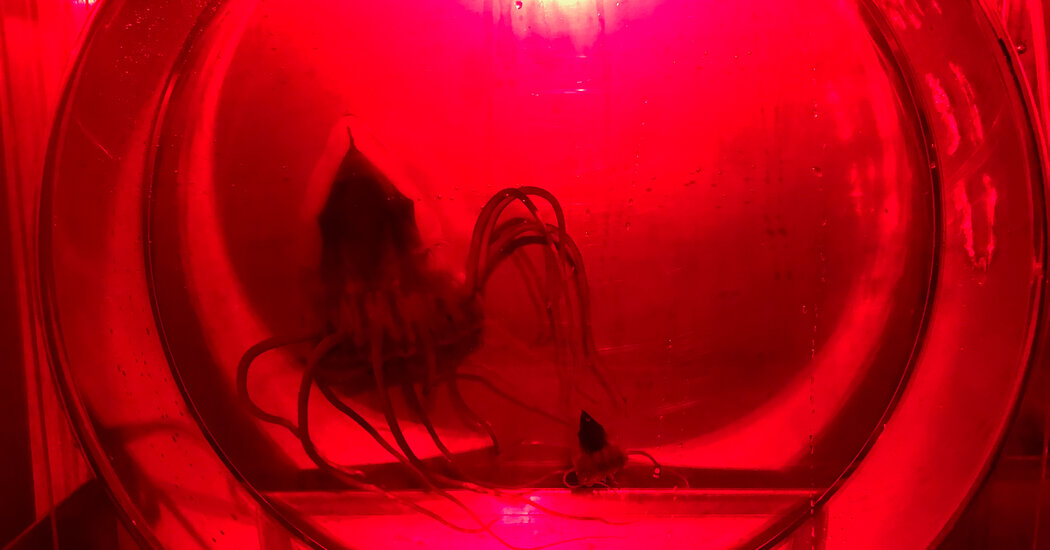
Shipboard experiments suggested that sediment from the exploitation of metals in the ocean could be harmful to marine life.
A treasure trove of metal is hiding at the bottom of the ocean. Potato-size nodules of iron and manganese litter the seafloor, and metal-rich crusts cover underwater mountains and chimneys along hydrothermal vents. Deep-sea mining companies have set their sights on these minerals, aiming to use them in batteries and electronics. Environmentalists warn that the mining process and the plumes of sediment it would dump back into the sea could affect marine life.
A series of shipboard experiments on jellyfish in the Norwegian fjords, published Tuesday in the journal Nature Communications, offer insights into those warnings. The scientists approximated the effects of mining by pumping sediment into the jellies’ tanks, essentially asking how the animals would cope with the muddy water. The answer? Not well.
The researchers selected helmet jellyfish as their research subjects because of the ubiquity and hardiness of the dinner-plate-size creatures. The idea was to choose an organism that the team could easily get hold of “and then expose it to conditions that we expect in the mid-water in the open ocean,” said Helena Hauss, a marine ecologist at the Norwegian Research Center who conducted the study while working at the GEOMAR Helmholtz Center for Ocean Research Kiel in Germany.
The jellies, which are found around the world in waters 1,500 to 2,000 feet deep, serve as representatives of the countless soft-bodied animals living in the open ocean that could be affected by mining.
The scientists caught the jellyfish, which are abundant in Norway’s fjords, with fine mesh nets and brought them below deck of their research vessel for study in dim rooms illuminated with red light.
“They really are adapted to live in eternal darkness,” said Vanessa Stenvers, an author of the paper and a doctoral candidate at GEOMAR. “And that’s why we had to be very careful when we observed and we always had to use red light to not disturb them.”
We are having trouble retrieving the article content.
Please enable JavaScript in your browser settings.
We are confirming your access to this article, this will take just a moment. However, if you are using Reader mode please log in, subscribe, or exit Reader mode since we are unable to verify access in that state.
Confirming article access.
If you are a subscriber, please log in.
